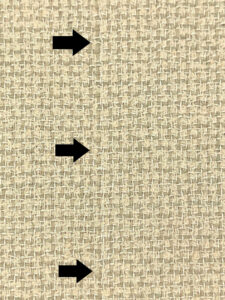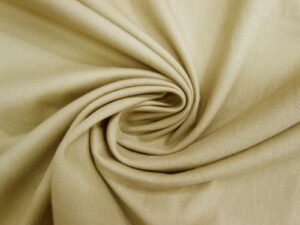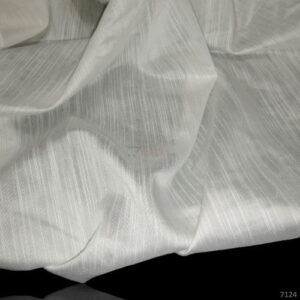What Percentage of Taffeta to Mix with Corduroy?
Fabric compatibility is crucial in fashion and sewing, ensuring that garments not only look good but also perform well. When considering mixing fabrics like taffeta and corduroy, understanding their properties and how they interact is essential. This article will explore the compatibility of these materials, offering insights into their use together.
Compatibility Analysis
Can taffeta be mixed with corduroy? Yes, taffeta and corduroy can be combined, but careful consideration is needed.
While these fabrics can complement each other, their differences in texture, weight, and care requirements must be managed. Taffeta, a smooth, crisp fabric, contrasts with the soft, ribbed texture of corduroy. The key factors to consider include:
- Texture: Taffeta’s smoothness can create an interesting contrast with corduroy’s ridges.
- Weight: Taffeta is lightweight, whereas corduroy is heavier, which can affect the drape.
- Stretch: Neither fabric is particularly stretchy, which simplifies sewing.
- Care Requirements: Taffeta often requires gentle handling, while corduroy is more robust.
- Durability: Corduroy is more durable, but taffeta adds elegance.
Fabric Properties Comparison Table
| Property | Taffeta | Corduroy |
|---|---|---|
| Fiber Content | Synthetic (polyester, nylon) | Natural (cotton) |
| Weight and Thickness | Lightweight | Medium to heavy |
| Breathability | Low | Moderate |
| Stretch and Elasticity | Low | Low |
| Wrinkle Resistance | Moderate | High |
| Care Instructions | Dry clean or gentle wash | Machine wash |
| Durability | Moderate | High |
Benefits of Mixing These Fabrics
Combining taffeta and corduroy can offer several advantages:
- Enhanced Texture and Visual Interest: The contrast between taffeta’s sheen and corduroy’s matte finish creates a striking visual effect.
- Improved Comfort and Performance: Corduroy’s warmth complements taffeta’s lightness, making the blend suitable for various climates.
- Better Drape and Movement: Taffeta adds fluidity to the garment, enhancing movement.
- Cost-Effectiveness: Mixing can reduce costs by using less of the more expensive taffeta.
- Seasonal Versatility: The combination works well for both winter and transitional seasons.
- Design Possibilities: Offers creative options for garments and home decor.
Potential Challenges
Working with these fabrics together can present challenges:
- Different Shrinkage Rates: Pre-wash fabrics to minimize discrepancies.
- Conflicting Care Requirements: Opt for gentle care methods suitable for both.
- Texture Clash or Pilling: Use interfacing to manage texture differences.
- Seam Puckering: Use appropriate sewing techniques to avoid puckering.
- Color Bleeding or Fading: Test for colorfastness before washing.
Sewing & Styling Tips
- Sewing Techniques: Use a straight stitch with a medium-length setting.
- Needle and Thread: Use a universal needle size 70/10 and polyester thread.
- Interfacing and Stabilizers: Use lightweight interfacing for taffeta sections.
- Seam Finishing Methods: Consider French seams or serging for a clean finish.
- Pattern Selection: Choose patterns that highlight the contrast in textures.
- Styling Ideas: Pair a taffeta blouse with corduroy pants for a chic look.
Care & Maintenance Guide
- Washing Instructions: Hand wash in cold water or use a gentle cycle.
- Drying Recommendations: Air dry to prevent shrinkage and maintain shape.
- Ironing and Steaming Tips: Use a low heat setting for taffeta; steam corduroy lightly.
- Stain Removal: Spot clean stains promptly, using appropriate stain removers for each fabric.
- Long-Term Care: Store garments in a cool, dry place to prevent damage.
FAQ Section
- Can you wash taffeta and corduroy together? It’s best to wash them separately to avoid damage.
- Will taffeta shrink more than corduroy? Taffeta is less prone to shrinking compared to corduroy.
- What needle size should I use for sewing these fabrics together? A size 70/10 universal needle is recommended.
- Can you mix taffeta and corduroy in one garment? Yes, but ensure the design accommodates their differences.
- How do you prevent seam puckering when combining these fabrics? Use a walking foot and adjust tension settings.
- Is it okay to mix taffeta and corduroy for upholstery? It’s possible but ensure the design suits the application.
- What’s the best way to finish seams with these fabrics? French seams or serging provide a neat finish.
By understanding the properties and compatibility of taffeta and corduroy, you can create garments and decor that are both stylish and functional. With the right techniques and care, these fabrics can complement each other beautifully.



Leave a Reply